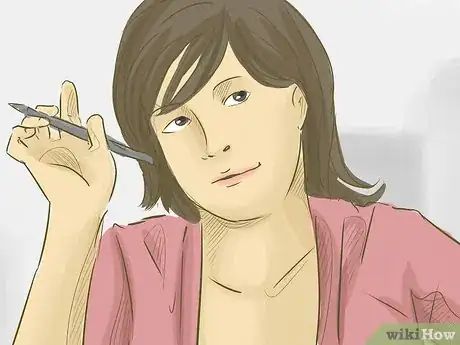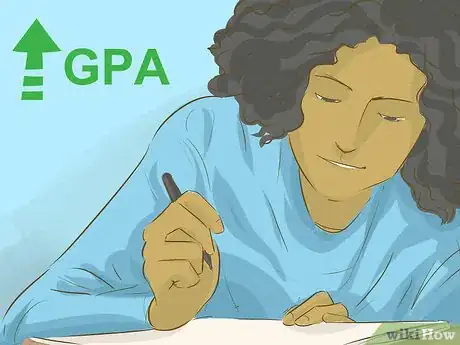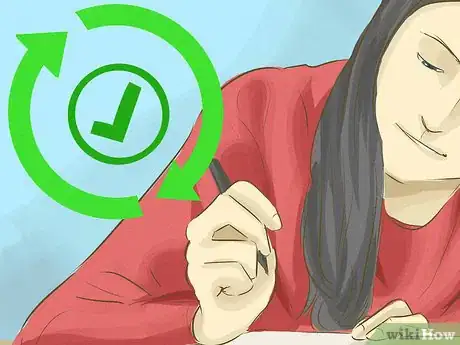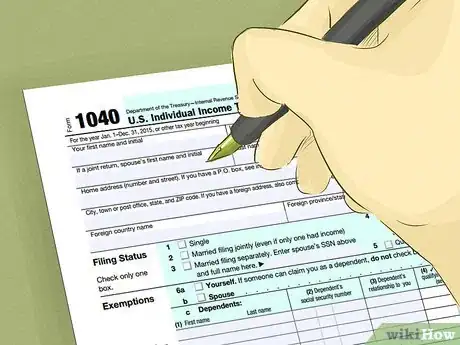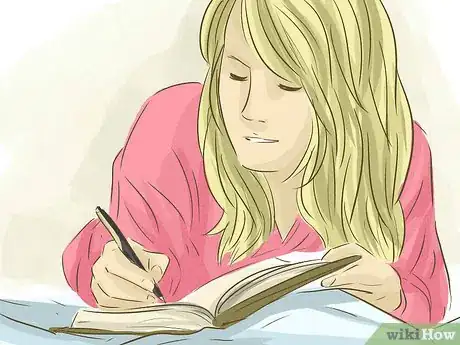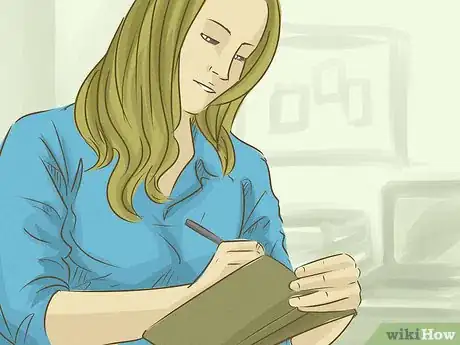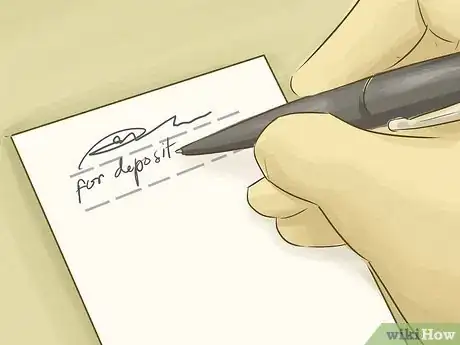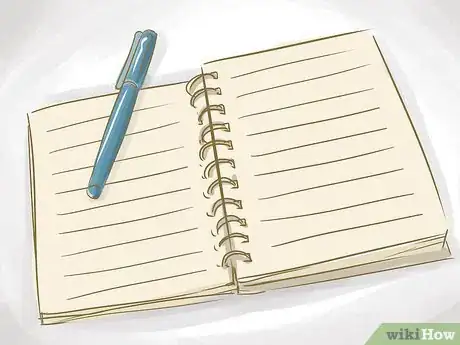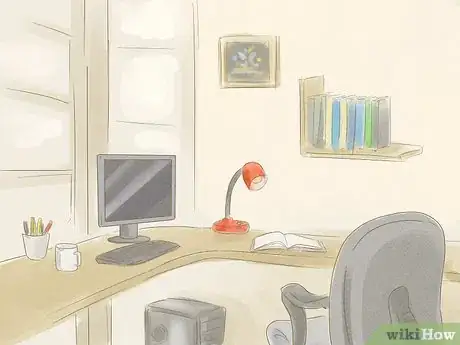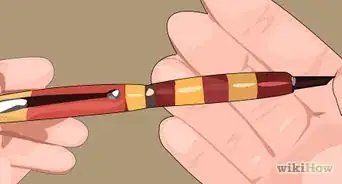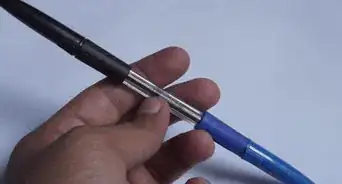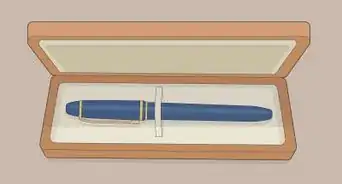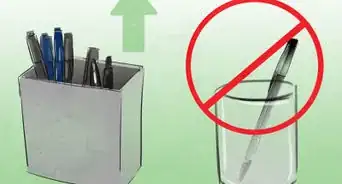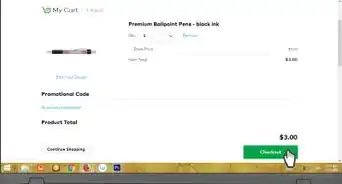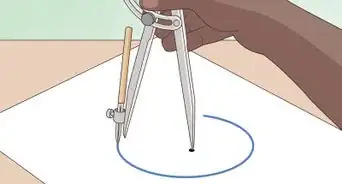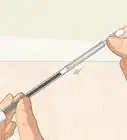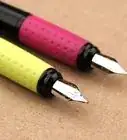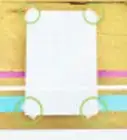This article was co-authored by wikiHow Staff. Our trained team of editors and researchers validate articles for accuracy and comprehensiveness. wikiHow's Content Management Team carefully monitors the work from our editorial staff to ensure that each article is backed by trusted research and meets our high quality standards.
There are 10 references cited in this article, which can be found at the bottom of the page.
wikiHow marks an article as reader-approved once it receives enough positive feedback. In this case, 92% of readers who voted found the article helpful, earning it our reader-approved status.
This article has been viewed 93,160 times.
Learn more...
Writing with a fountain pen is a labor of love. It’s about taking pleasure in the writing process as well as the words themselves. The results vary upon the size and construction of the pen, the type of ink, and even the paper. [1] If you’re ready to try out this precision instrument, keep in mind that it may require some retraining, due to the fact that it is constructed differently than the average ballpoint pen.
Steps
Holding a Fountain Pen
-
1Balance the pen. Depending on the size of your hand and the size of the pen, holding a fountain pen could cause weight and balance issues. Experiment with the cap posted (i.e. placing the cap on the back of the pen), and with the cap removed. The pen is usually more in balance when the cap is in place, but each person’s experience is different.[2]
-
2Take the pen in your dominant hand. Pinch the pen lightly between your thumb and index finger, then slide it towards the end of the index finger. Use the bottom of your hand, including your ring and pinky fingers, to anchor against the page. Do not press so firmly against the paper that free movement is restricted. [3]
- Do not grab the pen towards the bottom. If the hand is placed too far towards the end, it can affect the proper writing angle and potential ink flow.[4]
Advertisement -
3Rest the barrel on the bottom knuckle of your middle finger. This is similar to the positioning in which most people write. If the middle finger is guiding and squeezing more than being used as a resting point, adjust the pen’s rear closer to the V created where the thumb meets the hand.[5]
- It may feel more comfortable to place the pen closer towards the end of your middle finger, past the knuckle.
-
4Hold the pen toward the paper at a 40 to 55 degree angle.[6] The angle is extremely important, since it moves the tines away from the feed and allows ink to flow. Poor ink flow is usually due to an improper angle.[7]
- Keep in mind that each fountain pen requires a slightly different angle at which the tines and feed separate. You will learn to recognize this through practice.
- Some nibs have been modified by technicians to accommodate angles ranging from 35 degrees to nearly 90 degrees.[8]
- The feel will be different than that of a ball-point pen, which is designed to write from various angles, including vertical. A vertical fountain pen does not utilize the full width of the nib (the tip of the pen).[9]
-
5Keep the nib level with the paper. You don’t want the nib to rock side to side as you write. It’s possible for ink to flow from a variety of angles, but each pen has an optimal spot where the ink flows the best. Writing with a fountain pen can feel inconsistent if the nib is lifted or angled incorrectly off the paper.[10]
Writing with the Fountain Pen
-
1Avoid using your hand muscles. Begin gliding the tip of the pen across the page and within the lines by pulling your arm to the side. Most people tend to write with the muscles in their hand controlling movement for each letter. Aside from a more consistent pressure being applied, you will avoid fatigue in the fingers if you use the large muscles of the arm to control your strokes.
- Focus specifically on using the shoulder muscle to glide the pen across the page. Practice by writing pretend letters in the air.[11]
- The wrist should remain fairly stationary.
-
2Minimize pressure. Unlike ballpoint pens which often require pressure, writing with a fountain pens do not require the same amount of pressure. In fact, if working properly, a fountain pen should require virtually zero pressure. Pushing down too firmly with a fountain pen can actually damage the nib and affect the flow of ink.[12]
-
3Do not rotate the pen. This should be common-sense once holding the fountain pen. Some people, however, develop a habit of rotating writing devices to find an ideal spot or sharpened edge that will not work with fountain pens. Rotation with a fountain pen will change the proper page alignment, and result in potential scratching.[13]
-
4Practice with singular strokes of the pen. Using your arm muscles to write in a new way will cause some fatigue and inconsistency, so it’s smart to start with the basics. Write slashes, circles, spirals, and the letter X. Write them for several lines or pages to get used to the feel of using a fountain pen. You’re looking for flowing, evenly-spaced, uniform letters.[14]
- It may be beneficial to practice by using multiple lines in your first attempts, gradually shrinking the letters into the traditional single-spaced lines.
-
5Write a sentence. Once you’ve practiced simple strokes, writing complete sentences could provide a different dilemma. If the nib feels like it’s scratchy, you need to try a different angle, ensure that the nib isn’t rocking as you write, or reevaluate that you’re using the proper muscles. Adjusting these techniques will allow the ink to flow freely and reduce the scratching on the paper.
Gathering Your Writing Materials
-
1Purchase an inexpensive fountain pen. In the world of calligraphy, a cheap version is about $25, while specialty pens can range between $200 and $1,000. Start with a fountain pen with a removable cartridge.[15]
- Experiment with different nibs. Most pens allow you to replace the nibs, so that you can try finer and larger points. From smallest to largest, nibs have five grades: extra fine, fine, medium, broad, and double broad.[16]
-
2Use new, untainted ink. If the ink is several years old, has been in direct sunlight for some time, or has any signs of mold, it should probably not be used. If it is used, however, ensure it is thoroughly stirred to loosen any clumps. Black ink may be more likely to clog inside the nib of the pen because it contains gum arabic.
- Waterman, Sheaffer, and Pelikan inks are thinner, more resilient inks.[17]
-
3Get a pad of lined paper. The lines will help you create even letters and strokes. Some even recommend using a tablet for elementary school students, the ones with the dotted line in the middle.[18] As you get used to the pen and the size of your writing, you will be able to move to unlined paper.
- Use paper that is not chemically treated. The ink doesn’t absorb as well into the paper, and it could cause the nib to pool the ink.[19]
-
4Sit in a comfortable chair at a desk. The precision of writing with a fountain pen might exhaust your arm or hand at first, so it’s best to be as comfortable as possible. The key point is that your arm and hand are able to move freely.[20]
Community Q&A
-
QuestionHow do I remove the nib of the fountain pen?
 Community AnswerIt depends on what fountain pen you have. On most fountain pens, to remove the nib and cartridge, you would twist the nib and grip.
Community AnswerIt depends on what fountain pen you have. On most fountain pens, to remove the nib and cartridge, you would twist the nib and grip. -
QuestionWhat is the most effective way to clean a fountain pen?
 Community AnswerI usually wipe mine with a dry cloth. Unless it's really necessary, it's best not to clean it as it can damage your pen. If there are stains, try a damp cloth (but not on the nib).
Community AnswerI usually wipe mine with a dry cloth. Unless it's really necessary, it's best not to clean it as it can damage your pen. If there are stains, try a damp cloth (but not on the nib). -
QuestionIs it more difficult to write with a fountain pen left-handed, and would I need a special type of pen? What are some tips for left-handed fountain pen writing?
 Community AnswerYes. Writing with fountain pen left-handed can be more difficult, in some cases, but you could find left-handed pens online or at specialty stores.
Community AnswerYes. Writing with fountain pen left-handed can be more difficult, in some cases, but you could find left-handed pens online or at specialty stores.
Things You'll Need
- Fountain pen
- Lined paper
- Desk
- Distilled water
References
- ↑ http://www.marcuslink.com/pens/aboutpens/writing.html
- ↑ http://www.jetpens.com/blog/how-to-write-with-a-fountain-pen/pt/271
- ↑ http://www.jetpens.com/blog/how-to-write-with-a-fountain-pen/pt/271
- ↑ http://www.marcuslink.com/pens/aboutpens/writing.html
- ↑ http://www.marcuslink.com/pens/aboutpens/writing.html
- ↑ http://www.artofmanliness.com/2015/05/05/a-primer-on-fountain-pens/
- ↑ http://www.jetpens.com/blog/how-to-write-with-a-fountain-pen/pt/271
- ↑ http://www.richardspens.com/?page=ref/ttp/sweetspot.htm
- ↑ http://www.marcuslink.com/pens/aboutpens/writing.html
- ↑ http://www.jetpens.com/blog/how-to-write-with-a-fountain-pen/pt/271
- ↑ http://www.paperpenalia.com/handwriting.html
- ↑ http://captainchang.com/pens/myths.html
- ↑ http://www.jetpens.com/blog/how-to-write-with-a-fountain-pen/pt/271
- ↑ http://www.paperpenalia.com/handwriting.html
- ↑ https://www.bestfountainpen.com/top-5-best-fountain-pens-by-price/
- ↑ http://www.artofmanliness.com/2015/05/05/a-primer-on-fountain-pens/
- ↑ http://www.levenger.com/maintaining-a-fountain-pen-1216.aspx
- ↑ http://www.paperpenalia.com/handwriting.html
- ↑ http://www.levenger.com/maintaining-a-fountain-pen-1216.aspx
- ↑ http://www.paperpenalia.com/handwriting.html
- ↑ http://www.levenger.com/maintaining-a-fountain-pen-1216.aspx
About This Article
To write with a fountain pen, hold it at a 40-55 degree angle to the paper, which will help the ink inside flow out of the tip. As you're writing, use your arm to move the pen instead of your hand muscles and try to keep your wrist stationary. Also, avoid applying pressure when you write with a fountain pen since it can interfere with the ink flow. Instead, just let the pen glide across the paper as you write with it. To learn how to practice using a fountain pen, scroll down!
